What are the key factors to consider when choosing a suitable trommel scrubber? As ore processing equipment, the trommel scrubber (rotary scrubber) plays a vital role in the mining industry. It is responsible for removing impurities from the ore and improving the purity of the ore, thus laying the foundation for subsequent processing and refining processes. In this article, we will explore these five key factors one by one to provide you with practical guidance and suggestions for purchasing a trommel scrubber. I hope that after understanding these factors, readers can more smoothly choose equipment that meets their needs and provide strong protection for your mining operations.
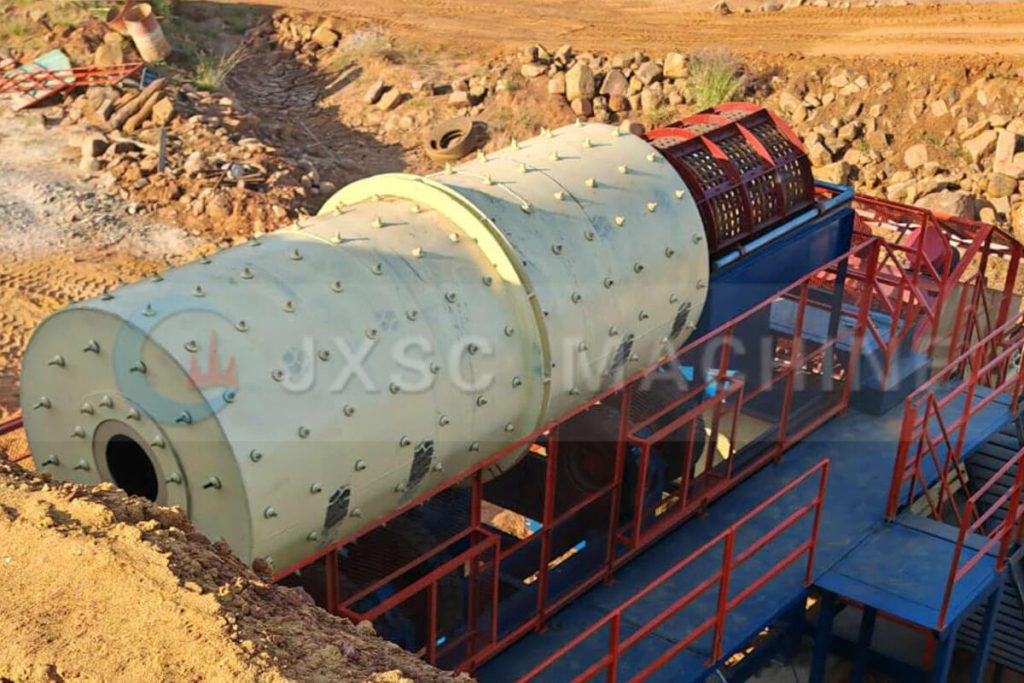
Choosing a suitable trommel scrubber can not only significantly improve the efficiency of ore processing, but also reduce operating costs and improve the economic benefits of the enterprise. Therefore, when purchasing, we need to comprehensively consider a variety of factors: the type of ore, the processing capacity of the equipment, the size layout, energy efficiency, and the supplier’s after-sales service. Each factor has its own unique importance, and careful comparison and evaluation will help you make a more informed decision.
What is a trommel scrubber?
A trommel scrubber is a highly efficient cleaning equipment widely used in the mining and recycling industries. It is mainly used to remove impurities and dirt from the surface of ore to improve the purity and value of the ore. It is suitable for processing various ores with high mud content or impurities, such as gold, diamond, iron ore, copper ore, barite, manganese, quartz sand, limestone, etc. If the mineral contains less sticky mud, you can consider a drum screen, spiral washer or other ore washing equipment.
It has the characteristics of compact structure, low failure rate, and low water consumption. The cleaning effect can be optimized by adjusting the speed and filling rate. It is widely used in small -large mining palnt, construction aggregate processing and tailings recovery, and is an important equipment for achieving clean production and efficient resource utilization.
5 factors to consider For buying trommel scrubber
Factor 1: Ore type
Sand & gravel (such as river pebbles and granite) are usually characterized by high hardness (Mohs hardness 6-8) and low viscosity, but clay films and fine mud impurities are often attached to the surface, so it is necessary to focus on the “rubbing and scrubbing” ability of the equipment. For coal, it is necessary to consider the sealing design of the equipment to reduce the evaporation loss of water and avoid affecting the product quality.
The diversity of metal ores puts forward more refined requirements for equipment: gold mines are often associated with clay and sulfide minerals, and the desludging efficiency needs to be enhanced to ≥95%. It is recommended to use an extended drum with a stainless steel screen with a pore size of 0.5-1mm. Iron ore is easy to agglomerate due to the magnetic particles, so a magnetic separation pre-separation device needs to be added at the end of the drum. The highly corrosive environment of copper mines requires the use of wear-resistant and corrosion-resistant high manganese steel as the drum material, and the bearings are double-sealed.
Recommendation: For sand and gravel stone, it is recommended to choose a trommel washer with a large flow rate and strong impact to achieve effective cleaning and separation. For coal, the selected model should have good sealing and moisture adaptability, and may also need to be combined with a drying system to ensure the quality of the finished product. In addition, for metal ores washing, the drum ore washing machine needs to have higher wear resistance and load capacity to adapt to long-term high-intensity work.
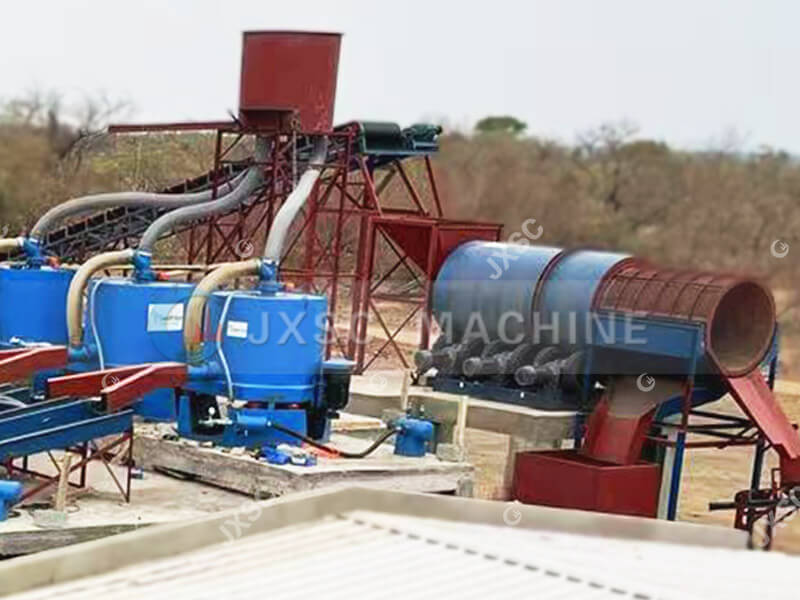
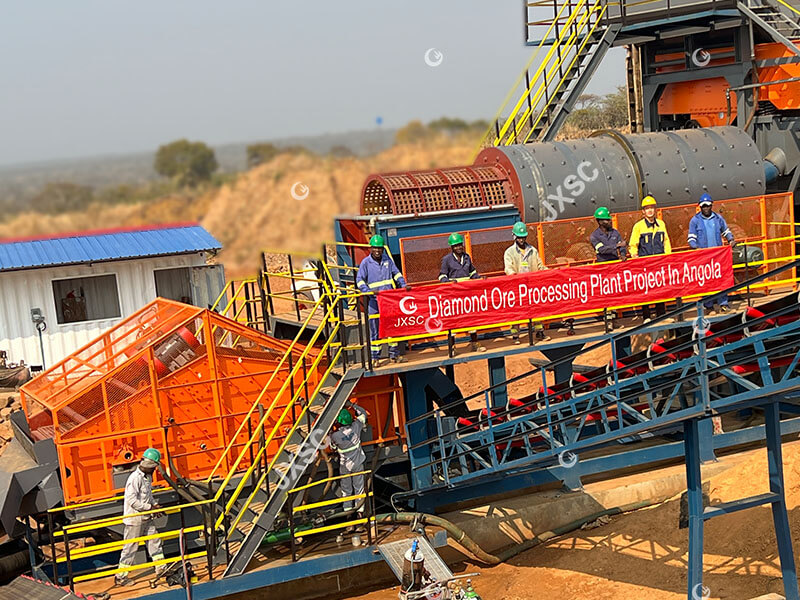
Factor 2: Processing capacity
Processing capacity usually refers to the amount of ore that the ore washer can process per unit time, usually expressed in tons/hour or cubic meters/hour. Its processing capacity is 1-400 TPH. For mines of different sizes, the required processing capacity varies greatly. Large mines may require a processing capacity of up to hundreds of tons, while small mines may only need a trommel scrubber of dozens of tons.
Factor 3: Equipment size and layout
When designing a mine, it is necessary to evaluate the overall dimensions of the trommel scrubber and the configuration of its accessories in detail to ensure that there is enough space to set up the ore washer, conveyor, and other auxiliary equipment, so that each link can be seamlessly connected to avoid production delays caused by insufficient space. In addition, appropriate equipment spacing also facilitates daily maintenance and overhaul, reduces downtime, and improves work efficiency.
When installing an ore washer, the requirements for installation space and channels must be taken into account. If it is a large drum ore washer (diameter > 2m, length 8-12m), strict requirements are placed on the plant structure: the foundation load-bearing capacity must reach 30-50kN/m², the equipment foundation depth must be ≥1.8m, and a 4-5m maintenance channel must be reserved around it. In addition, the channel design must take into account safety regulations, such as setting up anti-slip floors, emergency channel width, and setting up guardrails within 3m of the rotating parts of the equipment to improve the safety of operators.
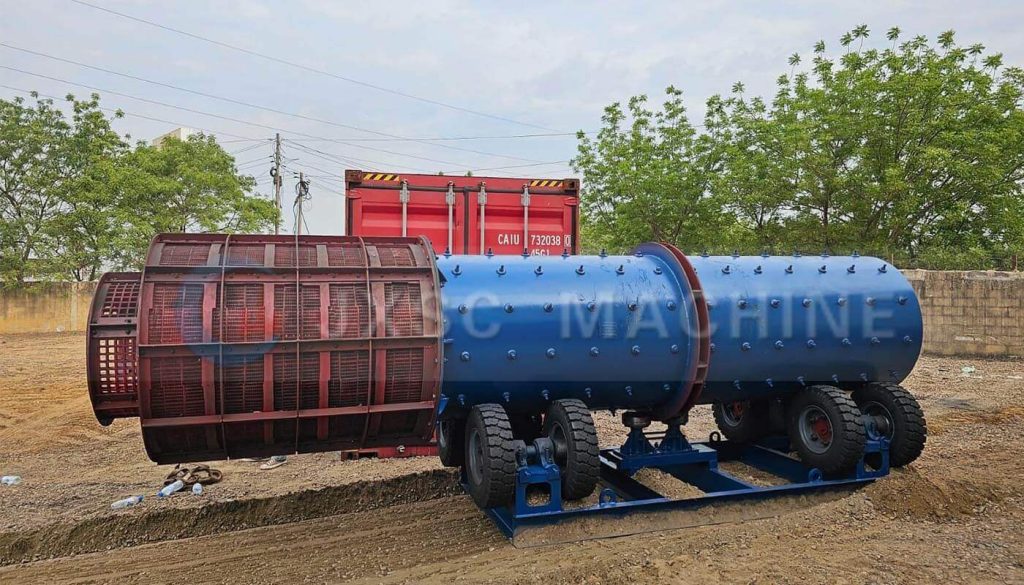
Factor 4: Energy efficiency
When choosing a drum scrubber, energy consumption is a key factor that cannot be ignored. The energy consumption of the ore washer directly affects the operating cost, especially when energy prices fluctuate greatly. Reasonable control of energy consumption can significantly reduce production expenses. Therefore, from the beginning of purchase, you should pay attention to the energy efficiency label and performance parameters of the equipment, and choose products with lower energy consumption under the same processing capacity to achieve the dual goals of economy and environmental protection.
On the one hand, the use of more efficient trommel ore washers can reduce energy consumption and thus reduce operating costs; on the other hand, equipment that meets environmental standards can help reduce emissions and resource waste, and enhance the company’s social responsibility image.
Therefore, when purchasing, you need to focus on its technical achievements and inspection reports to ensure the long-term use benefits and environmentally friendly performance of the equipment.
Model | Drum Dia(mm) | Drum&Screen Length (M) | Screen Mesh Size(mm) | Rotation Speed(r/min) | Feeding Size(mm) | Angle of Inclination(o) | Process Capacity(t/h) | Motor Power(kw) |
JXSC-400 | 400 | 2m+1.2m | ≤20 | 27.9 | ≤80 | ≤10 | 1-5 | 3 |
JXSC-600 | 600 | 2m+1.2m | ≤25 | 27.6 | ≤80 | ≤10 | 5-10 | 4 |
JXSC-750 | 750 | 2.5m+1.5m | ≤25 | 27.6 | ≤100 | ≤10 | 10-20 | 5 |
JXSC-900 | 900 | 3m+1.8m | ≤25 | 27.6 | ≤100 | ≤10 | 20-40 | 11 |
JXSC-1200 | 1200 | 4m+2m | ≤25 | 17 | ≤100 | ≤10 | 40-70 | 15 |
JXSC-1500 | 1500 | 4m+2m | ≤50 | 16 | ≤100 | ≤10 | 70-100 | 30 |
JXSC-1800 | 1800 | 4m+2m | ≤50 | 16 | ≤100 | ≤10 | 100-150 | 18.5*2 |
JXSC-2100 | 2100 | 4m+2m | ≤50 | 16 | ≤100 | ≤10 | 150-200 | 22*2 |
JXSC-2400 | 2400 | 6m+2.5m | ≤50 | 16 | ≤100 | ≤10 | 200-250 | 22*4 |
JXSC-2700 | 2700 | 6m+2.5m | ≤50 | 16 | ≤100 | ≤10 | 250-270 | 55*2 |
JXSC-3000 | 3000 | 6m+2.5m | ≤50 | 16 | ≤100 | ≤10 | 270-300 | 30*4 |
JXSC-3200 | 3200 | 6m+2.5m | ≤50 | 16 | ≤100 | ≤10 | 300-340 | 37*4 |
JXSC-3400 | 3400 | 6m+2.5m | ≤50 | 16 | ≤100 | ≤10 | 340-370 | 45*4 |
JXSC-3600 | 3600 | 6m+2.5m | ≤50 | 16 | ≤100 | ≤10 | 370-400 | 55*4 |
Factor 5: After-sales service and maintenance
Good after-sales service can quickly provide technical support and necessary maintenance services when equipment problems occur, reducing production losses caused by downtime. In addition, a professional after-sales team can also help users conduct on-site equipment analysis, provide maintenance suggestions, and extend the service life of the equipment.
The maintenance and maintenance plan of the equipment directly affect the use efficiency of the equipment. Regular maintenance can effectively prevent the occurrence of failures and ensure the stable operation of the equipment. Setting a reasonable maintenance cycle, combining the frequency of equipment use and the working environment, and formulating a scientific maintenance plan will help to detect potential problems on time and reduce the risk of unexpected downtime. In addition, many high-quality suppliers will provide detailed equipment maintenance manuals and training to help operators master the correct maintenance skills, thereby improving the work efficiency and safety of the equipment. Therefore, when purchasing a rotary scrubber, paying attention to the supplier’s after-sales service content is an important measure to improve operational efficiency.
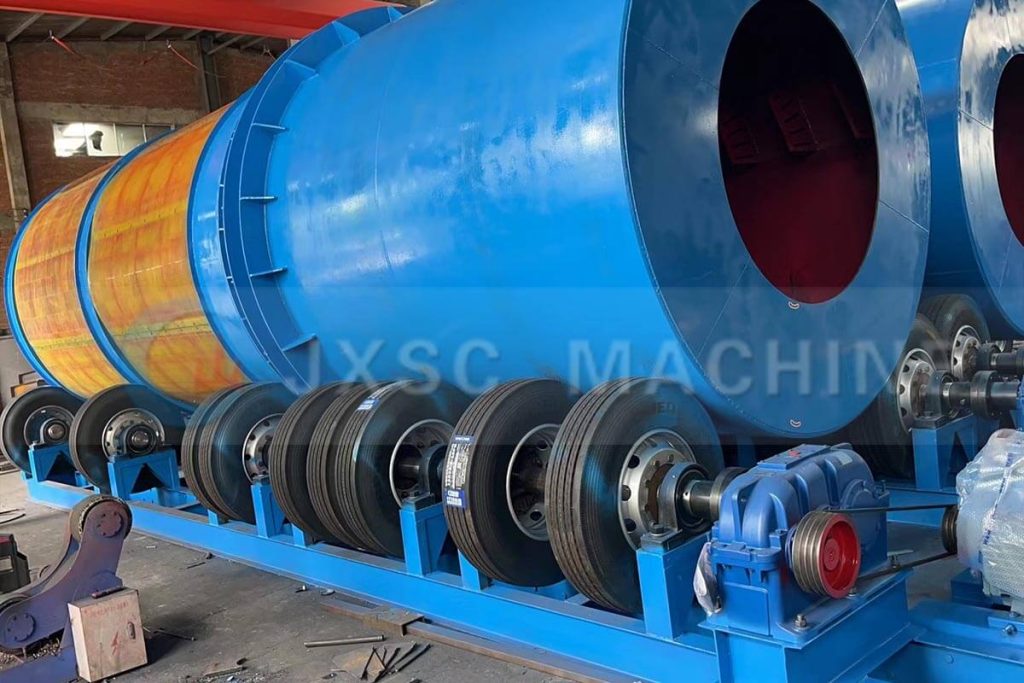
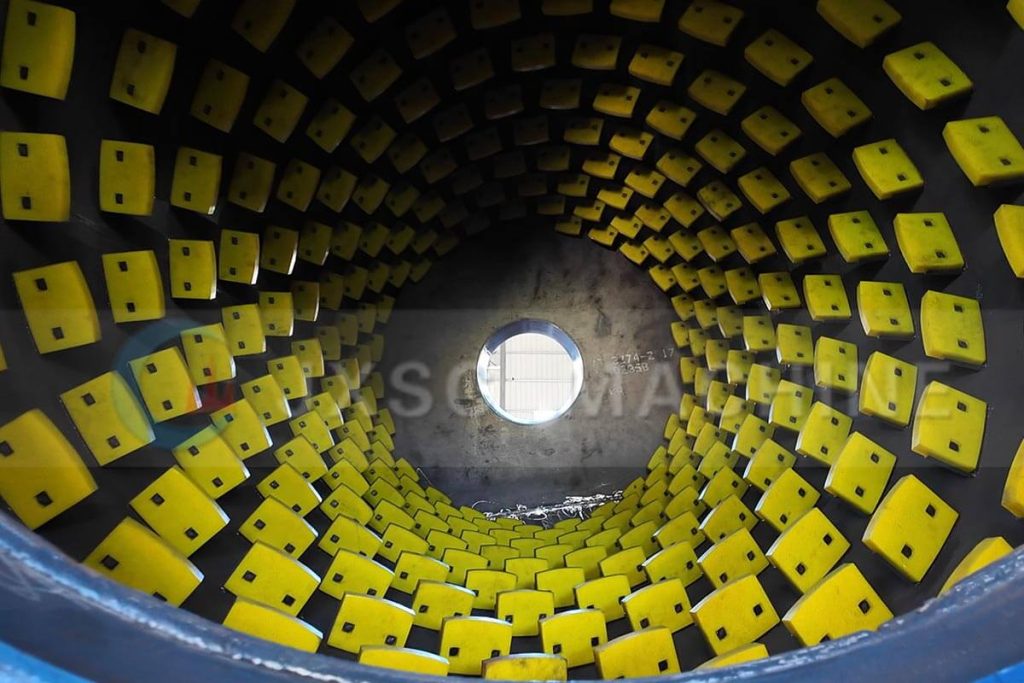
When choosing a trommel scrubber, you need to consider multiple factors, including equipment size and layout, energy efficiency, and the supplier’s after-sales service. Reasonable equipment size can optimize the mine layout and ensure smooth operation; and choosing energy-saving and environmentally friendly ore washers can not only effectively reduce operating costs, but also is an important manifestation of corporate social responsibility. At the same time, high-quality after-sales service and maintenance plans will directly affect the long-term use benefits of the equipment and ensure that the equipment is always in the best working condition.
Whether you are a novice in the mining industry or an experienced practitioner, this article will provide you with practical advice and guidance to help you achieve the best results in your mining operations. JXSC supports customization of various types of ore washers or other mineral processing equipment. Contact us for the best quote and solution!